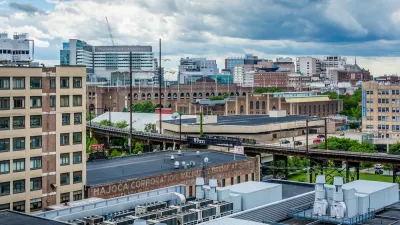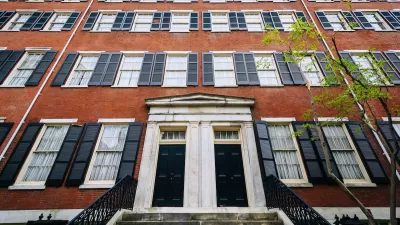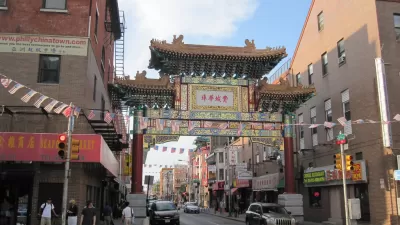A policy report from the Philadelphia Coalition for Affordable Communities made news for recommending policies to disincentive, with taxes, real estate speculation. The report also includes raw data on the transformation happening around the city.
"Last week, the Philadelphia Coalition for Affordable Communities (PCAC) released a policy report that contained some startling figures about displacement caused by gentrification in Philadelphia," reports Max Marin.
Noting that previous media coverage of the report by Plan Philly and the Philadelphia Daily News focused on the policy recommendations included in the report—namely that the city should enact a new "anti-speculation tax" to tax house flippers—Marin instead focuses on the data findings in the report that inspired the policy recommendation.
"Econsult helped conduct the research report, titled 'Development without Displacement: Keeping Communities Strong,' [pdf] using census data from 2000 to 2012. To our knowledge, it’s the first report of its kind that looks at factors and conditions of Philadelphia’s changing demographics over such a long period. It even offers a first-time estimate as to how many are being displaced from their homes, community spaces, businesses, and social networks."
Findings from the 12 years under study include:
- "the African-American population in gentrifying areas of South and West Philadelphia decreased by 29 percent, and by 22 percent in North Philadelphia."
- "'Housing cost-burdened' households were at 52 percent in 2012. That’s a citywide increase of 10 percent. The 7th District, which is largely Latino, saw a city-high 20 percent increase in housing-cost burdened households in those years."
- "West Philadelphia’s median home sale price increased 98%, twice the city rate; South Philadelphia’s median sale price increased 184%, more than three times the citywide rate; North Philadelphia’s median sale price increased 200%, nearly four times the citywide."
FULL STORY: The hard data on gentrification and displacement in Philly

Americans May Be Stuck — But Why?
Americans are moving a lot less than they once did, and that is a problem. While Yoni Applebaum, in his highly-publicized article Stuck, gets the reasons badly wrong, it's still important to ask: why are we moving so much less than before?

Using Old Oil and Gas Wells for Green Energy Storage
Penn State researchers have found that repurposing abandoned oil and gas wells for geothermal-assisted compressed-air energy storage can boost efficiency, reduce environmental risks, and support clean energy and job transitions.

Placekeeping: Setting a New Precedent for City Planners
How a preservation-based approach to redevelopment and urban design can prevent displacement and honor legacy communities.

San Francisco’s Muni Ridership Grew in 2024
The system saw its highest ridership since before the Covid-19 pandemic, but faces a severe budget shortage in the coming year.

Colorado Lawmakers Move to Protect BRT Funding
In the face of potential federal funding cuts, CDOT leaders reasserted their commitment to planned bus rapid transit projects.

Safe Streets Funding in Jeopardy
The Trump administration is specifically targeting bike infrastructure and other road safety projects in its funding cuts.
Urban Design for Planners 1: Software Tools
This six-course series explores essential urban design concepts using open source software and equips planners with the tools they need to participate fully in the urban design process.
Planning for Universal Design
Learn the tools for implementing Universal Design in planning regulations.
Heyer Gruel & Associates PA
City of Moreno Valley
Institute for Housing and Urban Development Studies (IHS)
City of Grandview
Harvard GSD Executive Education
Salt Lake City
NYU Wagner Graduate School of Public Service
City of Cambridge, Maryland





























